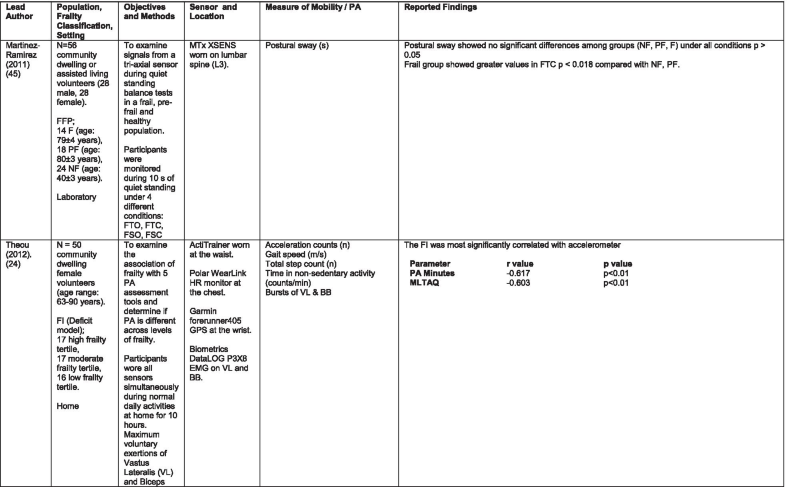
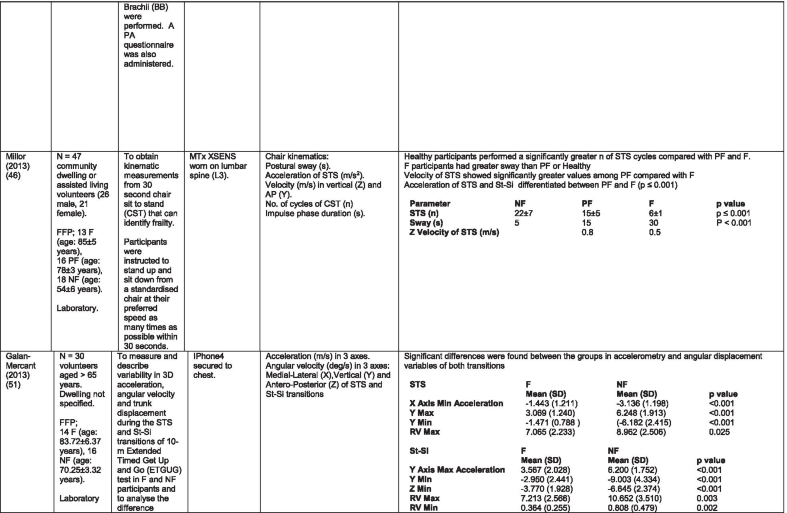
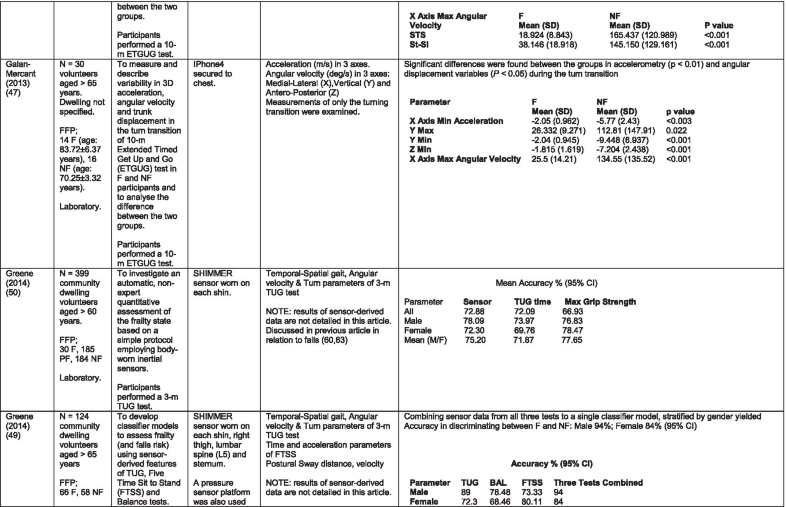
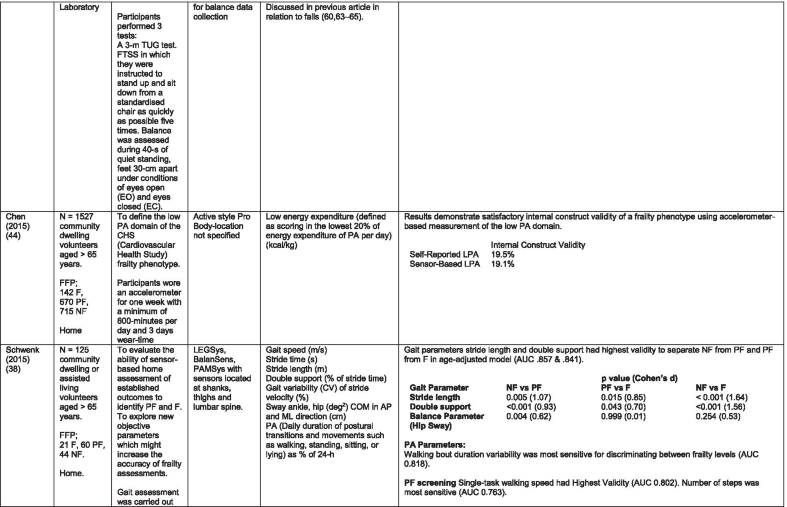
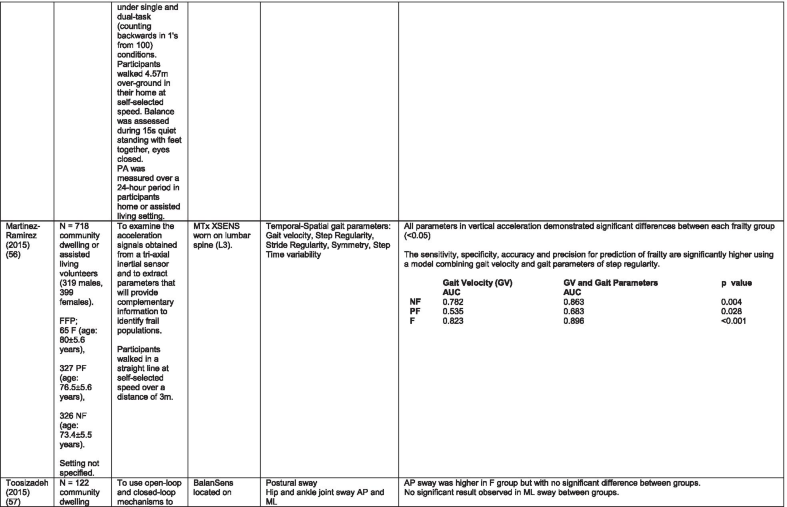
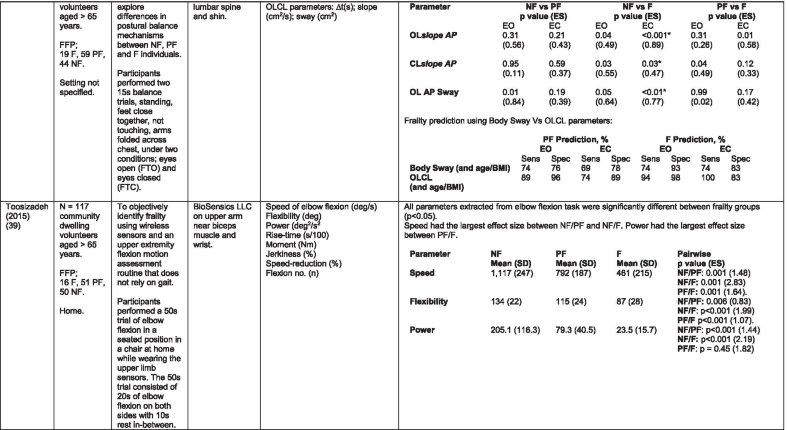

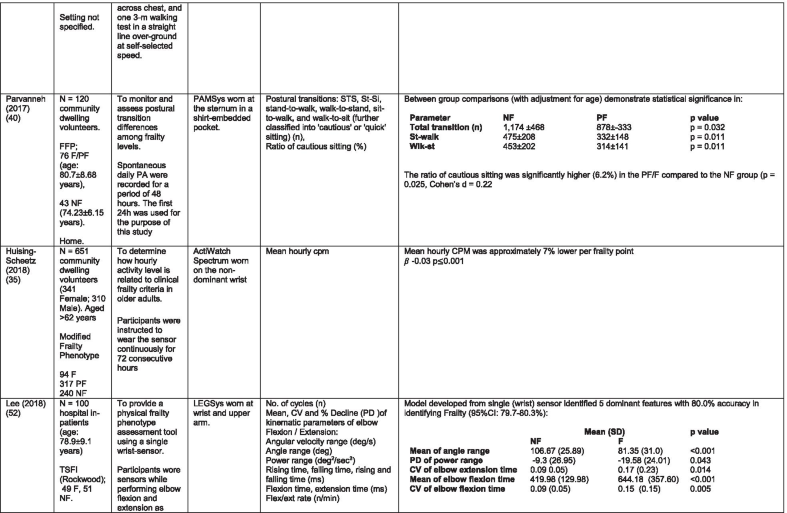
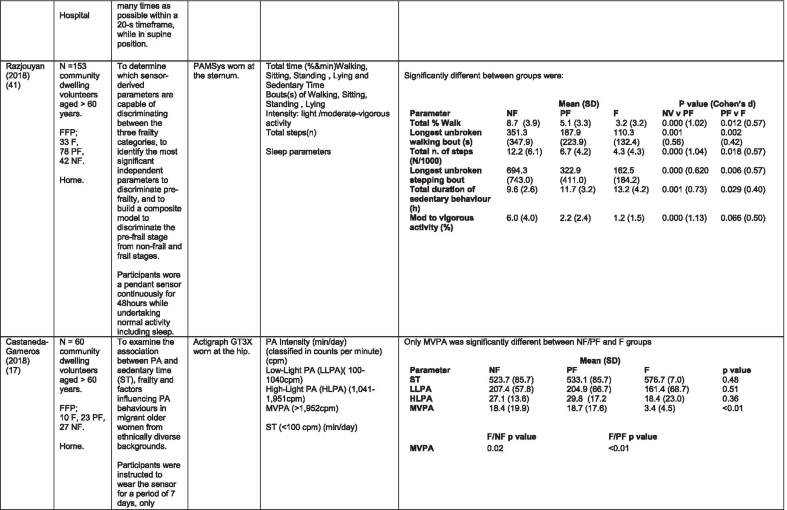
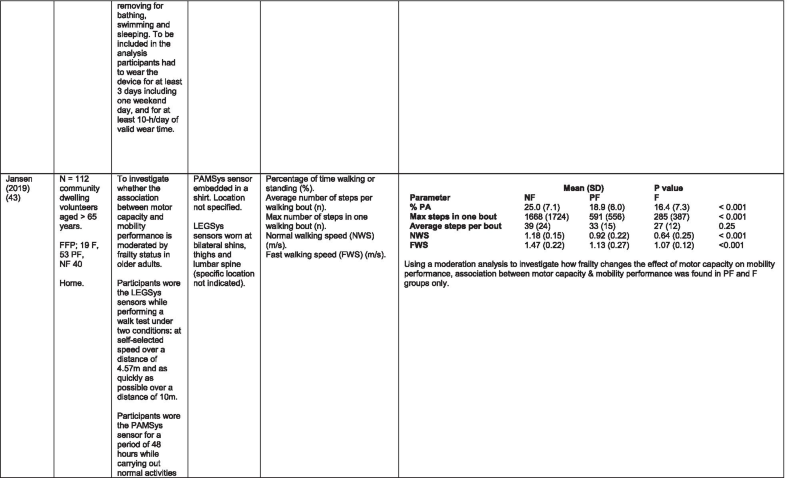
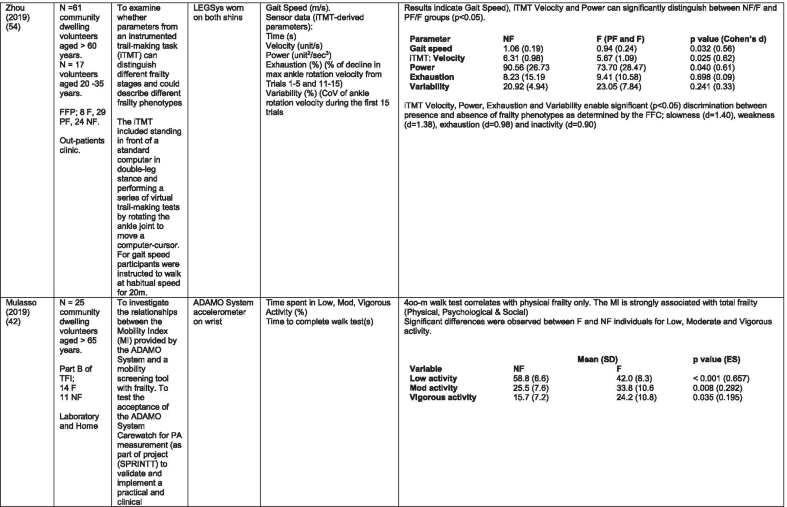
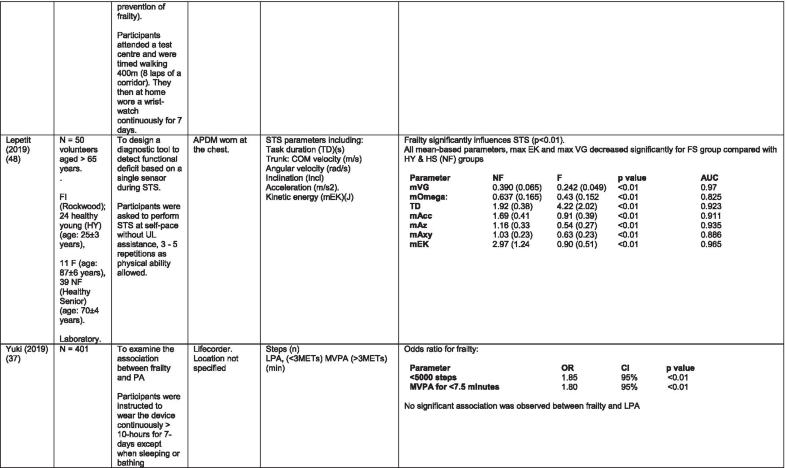
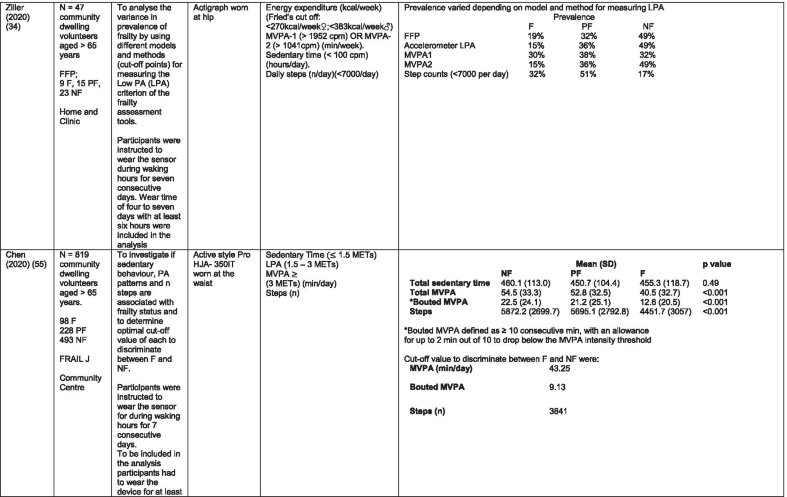

- N/n Number, FFP Fried’s Frailty Phenotype, F Frail, PF Pre-Frail, NF Non-Frail, s seconds, FTO Feet Together Eyes Open, FTC Feet Together Eyes Closed, FSO Feet Semi-tandem Eyes Open, FSC Feet Together Eyes Closed, L3 Lumbar Vertebrae n 3, PA Physical Activity, GPS Global Positioning System, EMG Electromyography, m/s metre per second, VL Vastus Lateralis, BB Biceps Brachii, FI Frailty Index, r Correlation coefficient, CST Chair Stand, cpm counts per minute, m/s2 metre per second squared, STS Sit To Stand, St-Si Stand to Sit, 3D 3-Dimensional, ETGUG Extended Timed Get Up and Go, TUG Timed Up and Go, MGS Maximum Grip Strength, FTSS Five Times Sit to Stand, CI Confidence Interval, CHS Cardiovascular Health Study, kcal/kg calorie per kilogram, CV / CoV Coefficient of Variation, COM Centre of Mass, AP Antero-Posterior, ML Medial–lateral; h hour, AUC Area Under Curve, RMS Root Mean Square, OLCL Open Loop Closed Loop; ∆t Change in time, MVPA Moderate to Vigorous PA; MET Metabolic Equivalent, ISAR-HP Identification of Seniors At Risk-Hospitalised Patients Questionnaire; TFI Tilburg Frailty Index, TSFI trauma-Specific Frailty Index, UEF Upper-Extremity Frailty Assessment; GV Gait Velocity, CK Chair Kinematics; SD Standard Deviation, ST Sedentary Time, LLPA Low-Light PA, HLPA High-Light PA, NWS Normal Walking Speed, FWS Fast Walking Speed, iTMT instrumented Trail-Making-Task, mVG Mean value of the norm of the torso COM velocity; mOmega, mean value of the norm of the trunk angular velocity, TD Task Duration, mAcc mean Acceleration, mAz Acceleration in vertical axis; mAxy mean acceleration in horizontal plane, mEK mean kinetic energy, Frail-J J-CHS Frailty Indices adapted for Japanese older adults, DGI Dynamic Gait Index, DS Double Support













